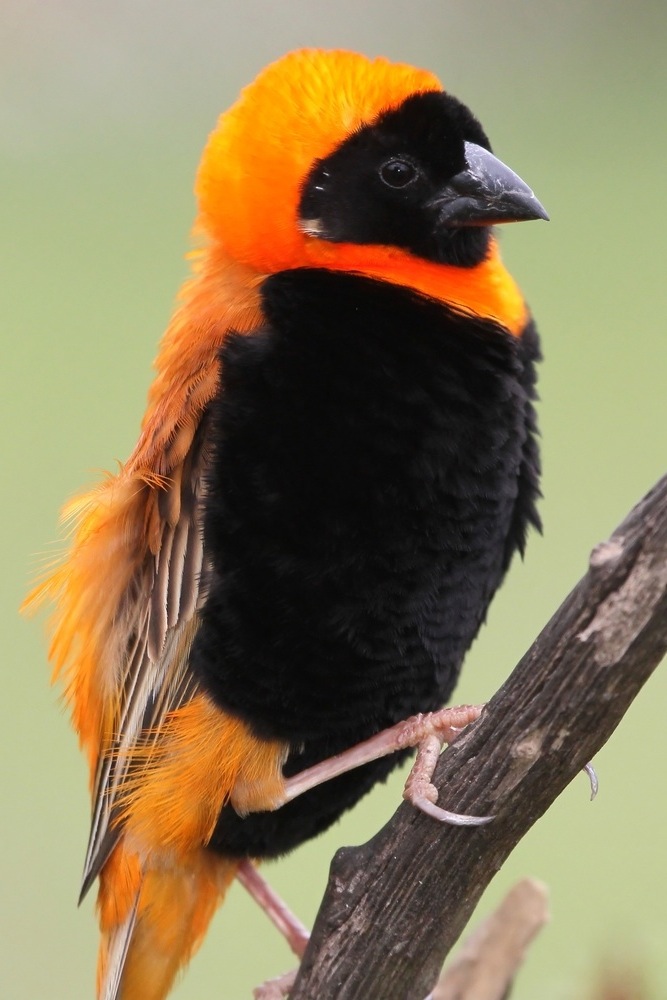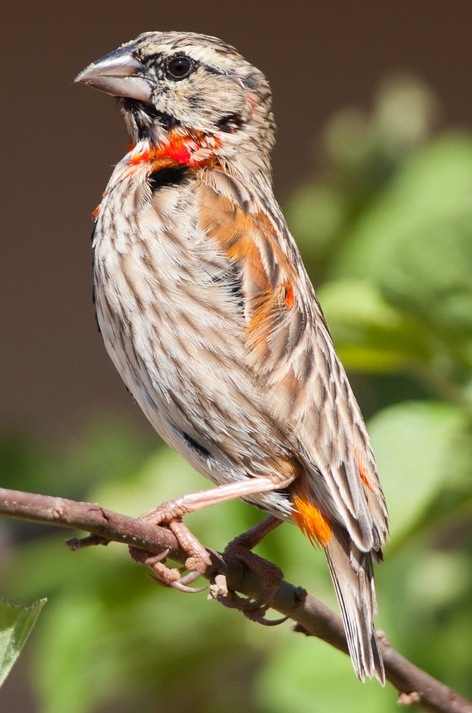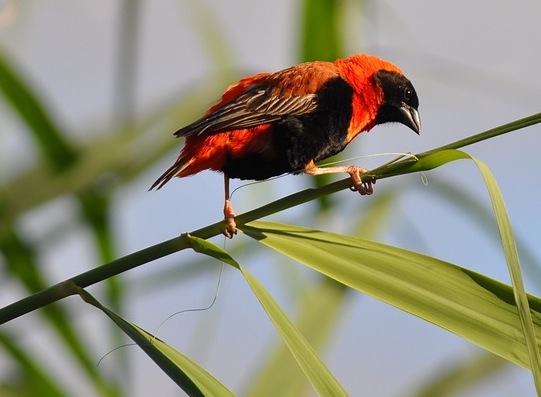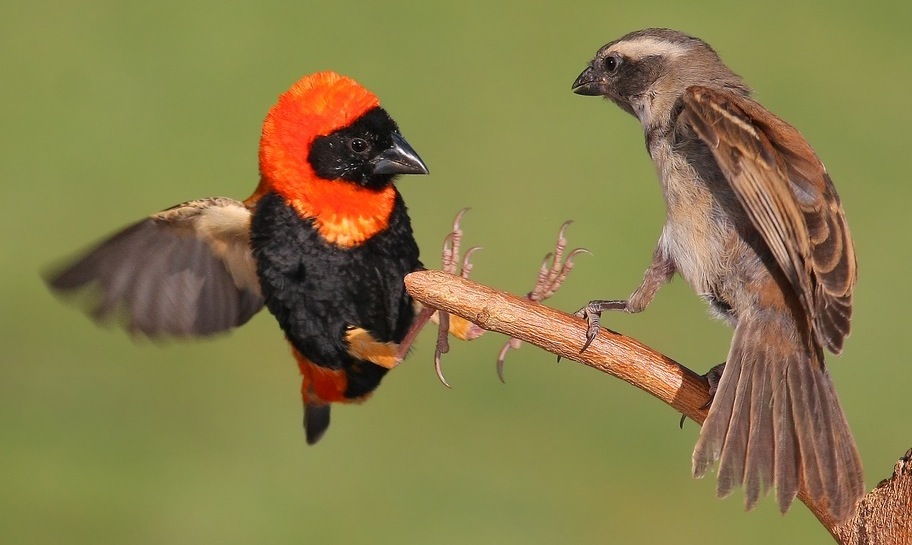Orange bishop (Orange weaver) - Euplectes orix

Origins: Ranges widely over Africa, south of the Sahara.
Length: 6in (15cm).
Appearance: Varies through the year, with cocks resembling hens outside the breeding season. Both sexes are then predominantly brownish with black streaking which is often more evident on the underparts of hens at this stage. At the onset of the breeding season, cocks are transformed, with black plumage developing on their head and underparts and a broad ruff of orange feathering appearing around the neck. The wings are a browner shade, with their upper tail coverts also being orange.

Birds in this condition are often advertised with the initials ‘IFC’, meaning “in full colour”, to distinguish them from those which are ‘OOC’, or “out of colour”. There are a number of different races of this weaver, which differ largely in terms of their extent of their orange plumage. The spectacular north African race - E.o. franciscana - is most commonly available. Young birds are resemble OOC adults, but are paler in colour. A cock bird coming into colour can be seen here.
Similar species: The black-bellied weaver (E. nigroventris) from east Africa has the same basic coloration, but is slightly smaller and has no raised ruff of feathers around its neck.
Noise rating: Not a worry.
Suitability

Their active nature means orange bishops are only suitable for an aviary or spacious flight. They can be housed in the company of finches of similar size, such as other weavers or Java sparrows (rice birds) (Padda oryzivora), but should not be housed with smaller companions such as waxbills.
Care: Relatively easy to keep, feeding on a diet comprised mainly of mixed millets and similar small cereal seeds. Livefood may also be eaten, and a general supplement is to be recommended. Colour feeding is useful when the cock is moulting in order to maintain his fiery orange plumage, which is otherwise likely to fade over successive moults. Grated carrot can also be tried - this contains a natural colouring agent. A planted aviary with bamboos and similar plants offers the greatest likelihood of breeding success, but it is likely to take a year for the birds to settle down before they start nesting in earnest. These weavers are quite hardy once acclimatised.
Breeding

Cocks are likely to be very aggressive towards each other during the breeding period, and are best kept apart. A single cock bird should be housed with three or four hens, as males of this species are naturally polygamous and have more than one mate. He will soon start to build suspended nests using stems of grass and other items, such as bamboos leaves and thin pieces of twig, in a suitable bush.
Breeding data: Two to seven greenish-blue eggs, incubated by the hen for approximately 14 days. The chicks are then also reared by her, and fledge after a similar interval.
Caution: Housing these weavers in individual pairs inevitably ends in breeding disappointment, because the cock’s persistent attentions will disturb the hen when she is nesting.
Potential lifespan: Up to 10 years.